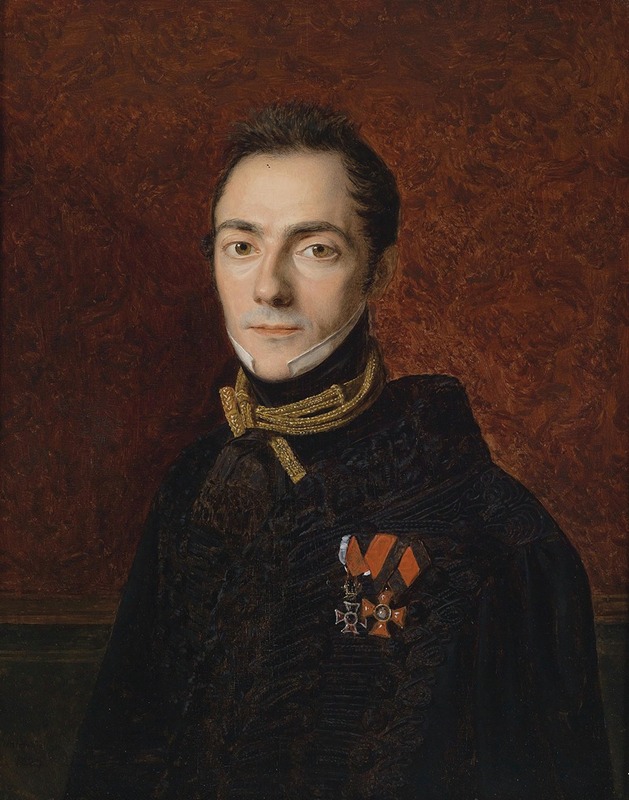
Portrait eines Grafen Apponyi
A hand-painted replica of Ferdinand Georg Waldmüller’s masterpiece Portrait eines Grafen Apponyi, meticulously crafted by professional artists to capture the true essence of the original. Each piece is created with museum-quality canvas and rare mineral pigments, carefully painted by experienced artists with delicate brushstrokes and rich, layered colors to perfectly recreate the texture of the original artwork. Unlike machine-printed reproductions, this hand-painted version brings the painting to life, infused with the artist’s emotions and skill in every stroke. Whether for personal collection or home decoration, it instantly elevates the artistic atmosphere of any space.
Ferdinand Georg Waldmüller was a prominent Austrian painter of the 19th century, renowned for his contribution to the Biedermeier period, which emphasized realism and detail in art. One of his notable works is "Portrait eines Grafen Apponyi" (Portrait of a Count Apponyi), which exemplifies his skill in portraiture and attention to detail.
Waldmüller was born on January 15, 1793, in Vienna, Austria. He studied at the Academy of Fine Arts in Vienna and initially focused on religious subjects and still lifes. However, he soon became known for his portraits and landscapes, which captured the essence of the Biedermeier style. This period, spanning from 1815 to 1848, was characterized by a focus on the middle class, domesticity, and a sense of order and clarity in art.
The "Portrait eines Grafen Apponyi" is a testament to Waldmüller's mastery in capturing the character and status of his subjects. Although specific details about the painting's creation and the identity of the Count Apponyi depicted are limited, it is known that the Apponyi family was a prominent noble family in Hungary and Austria. The family had significant influence and connections within the Austro-Hungarian Empire, and members of the family were often patrons of the arts.
Waldmüller's portraits are celebrated for their lifelike representation and meticulous attention to detail. In "Portrait eines Grafen Apponyi," he employs a realistic style that highlights the textures of the count's clothing and the subtle expressions on his face. This attention to detail not only showcases Waldmüller's technical skill but also provides insight into the fashion and social status of the period.
The painting reflects the Biedermeier period's emphasis on individualism and personal identity. Portraits during this time were not merely representations of physical appearance but also conveyed the personality and social standing of the subject. Waldmüller's ability to capture these elements made his portraits highly sought after by the nobility and bourgeoisie of the time.
Ferdinand Georg Waldmüller's work, including "Portrait eines Grafen Apponyi," played a significant role in the development of 19th-century Austrian art. His dedication to realism and his ability to depict the subtleties of human expression and the material world around him have left a lasting impact on the art world. Waldmüller's paintings are housed in various museums and collections, where they continue to be studied and admired for their contribution to the Biedermeier style and their reflection of the cultural and social dynamics of the time.
In summary, "Portrait eines Grafen Apponyi" by Ferdinand Georg Waldmüller is a significant work that exemplifies the artist's skill in portraiture and his contribution to the Biedermeier period. While specific details about the painting and the count depicted remain limited, the work stands as a testament to Waldmüller's ability to capture the essence of his subjects with realism and detail.


















